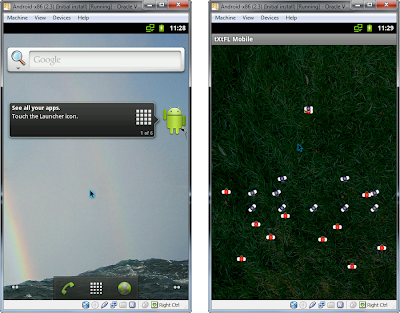From ink well to Inkscape
I never had the privilege of dipping my pen into ink wells before composing my essay or marking a test. I did however enjoy the modern equivalent of dip pens in the form of Apple ][ and Macintosh Classic paint programs. The revolutionary software greatly simplified the mass creation of posters and handouts, but it didn't quite turn my elementary classmates and I into artists overnight. We had to wait for Adobe Photoshop and Illustrator to do that, and I, ahem, would still never consider myself an artist.
Recently however I had to generate a number of scientific figures at higher than my normal it's-ok-for-PowerPoint quality, and I found myself hunting down new techniques to make use of modern graphics editing software to make up for my artistic inadequacies. As usual, I gravitated toward my old haunt, open-source software, and to one program in particular: Inkscape.
Inkscape is the open-source counterpart to Adobe Illustrator as a vector-graphics editing software. Unlike typical raster-graphics software, if I draw a line, I can shift around its endpoints and even add new bends and twists. Put this together for all lines and many other handy tools as well, and you have the perfect enabler for someone who can't even quite draw a straight line, let alone in the right place.
While browsing the Inkscape news, I saw the results of a class project that used Inkscape to teach 4th graders about graphics software and programming. The artwork isn't exactly Van Gogh (ok, maybe the blobs look a little Gogh-esque), but I was thrilled by the resourcefulness and ingenuity of teaching young students through Inkscape. Using Inkscape's toolset--surprisingly simple to the novice and yet packed with tons of hidden powers--students could draw and tweak without the frustration of the paint programs I grew up with. If they make a mistake, they just drag drag the line's nodes. No need for even a pencil eraser. By learning to draw with Inkscape early on, they can hone their designer techniques through junior high and beyond and, hey, maybe some of their student election posters will one day look better than ours.
Oh, and in today's budget crisis, Inkscape's free. Better yet, you don't even need an expensive Mac to run it.*
* But no need to fear, as you can run it on a Mac, or Windows, or Linux.
Recently however I had to generate a number of scientific figures at higher than my normal it's-ok-for-PowerPoint quality, and I found myself hunting down new techniques to make use of modern graphics editing software to make up for my artistic inadequacies. As usual, I gravitated toward my old haunt, open-source software, and to one program in particular: Inkscape.
Inkscape is the open-source counterpart to Adobe Illustrator as a vector-graphics editing software. Unlike typical raster-graphics software, if I draw a line, I can shift around its endpoints and even add new bends and twists. Put this together for all lines and many other handy tools as well, and you have the perfect enabler for someone who can't even quite draw a straight line, let alone in the right place.
While browsing the Inkscape news, I saw the results of a class project that used Inkscape to teach 4th graders about graphics software and programming. The artwork isn't exactly Van Gogh (ok, maybe the blobs look a little Gogh-esque), but I was thrilled by the resourcefulness and ingenuity of teaching young students through Inkscape. Using Inkscape's toolset--surprisingly simple to the novice and yet packed with tons of hidden powers--students could draw and tweak without the frustration of the paint programs I grew up with. If they make a mistake, they just drag drag the line's nodes. No need for even a pencil eraser. By learning to draw with Inkscape early on, they can hone their designer techniques through junior high and beyond and, hey, maybe some of their student election posters will one day look better than ours.
Oh, and in today's budget crisis, Inkscape's free. Better yet, you don't even need an expensive Mac to run it.*
* But no need to fear, as you can run it on a Mac, or Windows, or Linux.


Comments